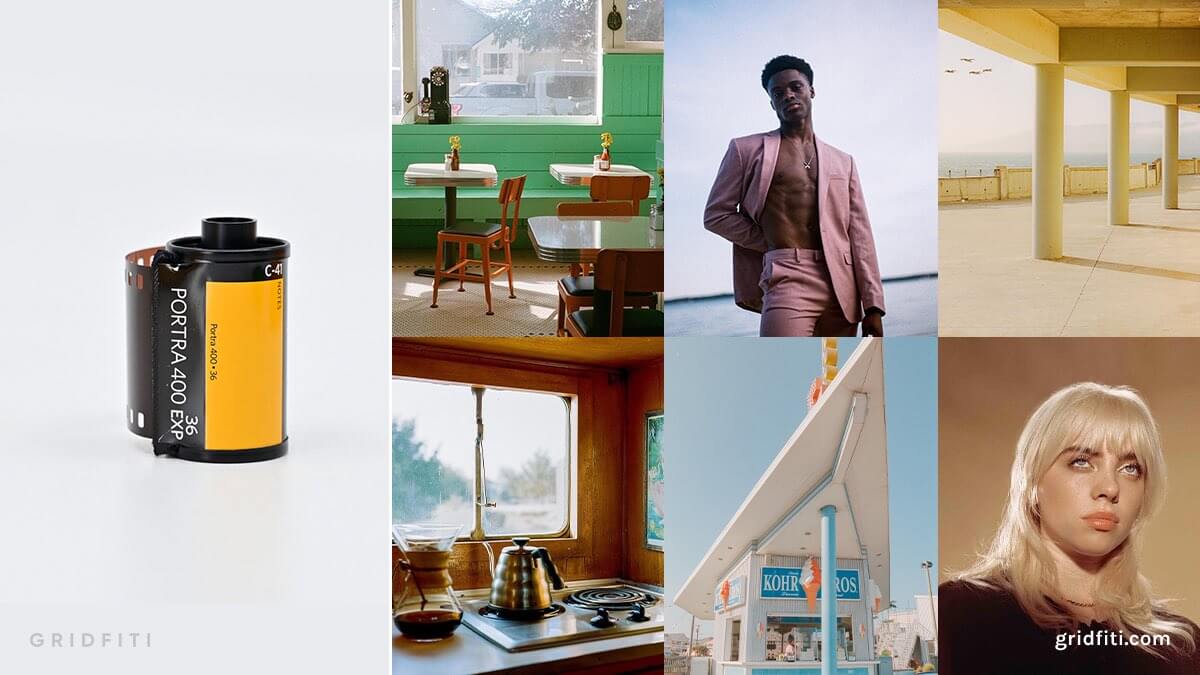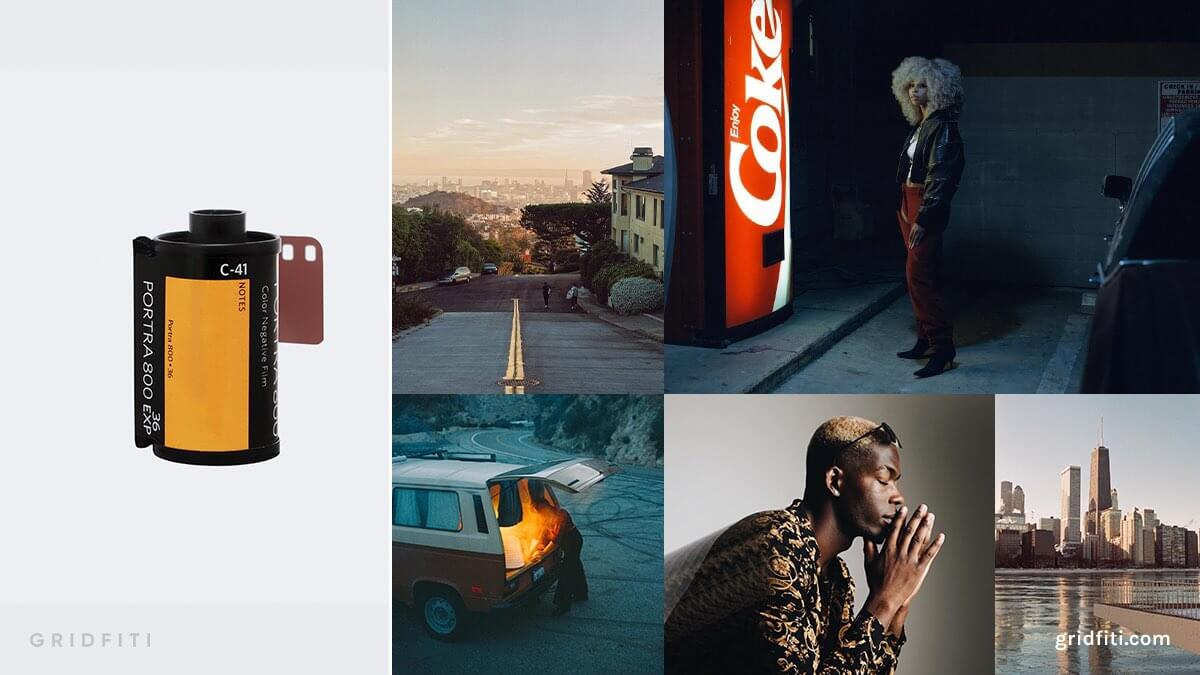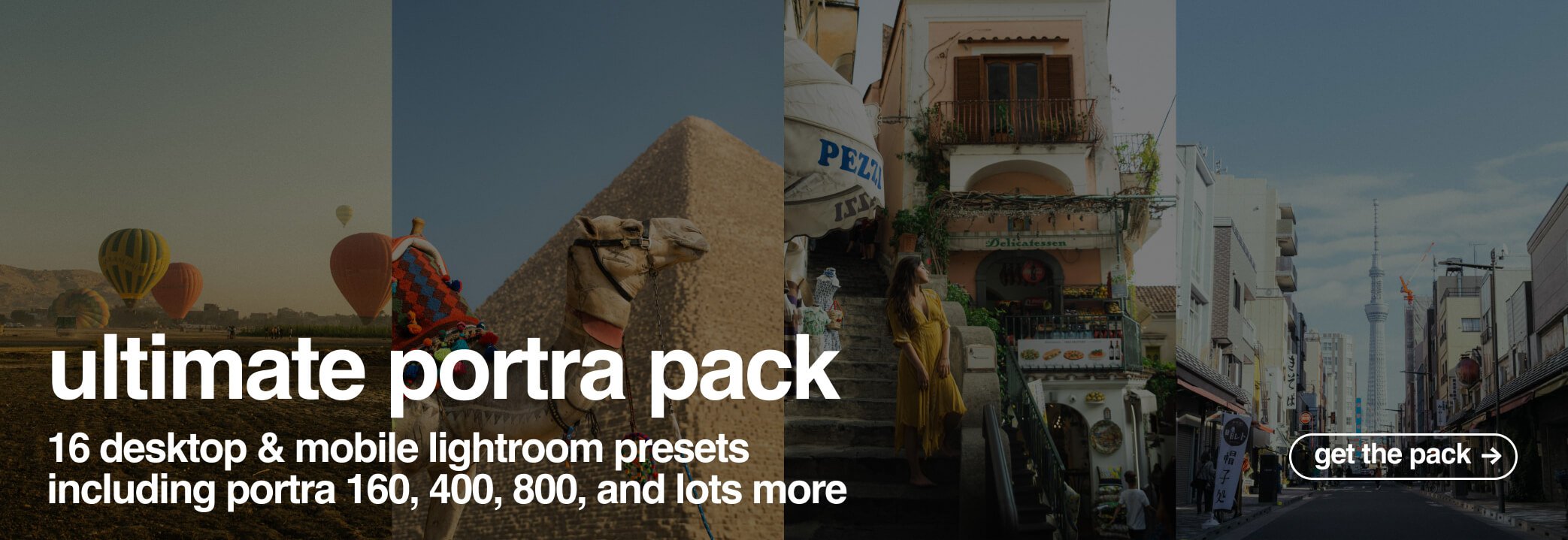You’ve just picked up a new film camera – you’ve watched all the tutorials on how to use it, and you’re now on the hunt for some fresh film to load into it. Look no further than Kodak’s professional line of iconic Portra film stocks, which come in 160, 400, and 800 speeds.
Whether you’re an avid Portra 400 user and are looking to experiment with other speeds, or are seeking out your very first Portra roll and aren’t sure which to start with – you’ve come to the right place!
We’ll go over why Portra is such a popular film stock, a quick refresher on film speeds (aka ISO), and ultimately – what the differences are between Portra 160 vs. 400 vs. 800, along with sample photos. Let’s dive in.
Want more photography and editing guides and tips? Check out our several other preset blog posts, and join our mailing list below!
Want to bring the Kodak Portra look to any of your digital photos?
Get the all-in-one Ultimate Portra Lightroom Preset Pack including Portra 160, 400, 800 and more — no film required.
First off, why is Kodak Portra so popular?
Kodak Portra is a go-to pick in the film community for its color saturation over a wide range of lighting conditions, latitude with skin tones, and forgiving exposure. The film lends itself to a variety of photography – ranging from portraits to landscapes, thanks to its great color reproduction.
If recent Portra prices are looking too high, fear not – there are many Kodak Portra alternatives to choose from, with the likes of Fuji and Lomography! You can check out the difference between Portra and Lomo film in our comparison post here!
Quick Recap: What is Film Speed / ISO?
Before going through the differences between Kodak Portra 160 vs. 400 vs. 800, let’s quickly break down what these numbers mean.
The number at the end of a film stock is the speed, also known as ISO: aka the film’s sensitivity to light.
The higher the film speed, the higher the sensitivity to light. Higher speed film stocks are great for low light photography – whether you’re shooting indoors or at night. This comes at the expense of grain in your image.
If the film stock has a low speed, it’s less sensitive to light. Lower speed film stocks are perfect for settings where light is abundant – most commonly, daylight. Not only do lower ISO stocks account for bright settings, but they also provide much finer grain – making for crisp, sharp images.
Kodak Portra 160 vs. 400 vs. 800: What’s the Difference?
Kodak Portra 160
At the lower end of the speed spectrum, Portra 160 is the film for bright days, direct sunlight, and fine grain. Metering Portra 160 at box speed (setting the camera meter to the exact speed of the film) brings out the best of Portra 160, as the colors of this stock can shift more when over or under exposed.
The low speed of Portra 160 unfortunately means it doesn’t perform well in low light. However, with external flashes or other lighting accessories, you can achieve that low-light performance with the added bonus of the 160’s fine grain and sharpness! Portra 160 comes in 35mm, 120 (medium format) and large format (4×5”).
Check Out Kodak Portra 160:
 Images by @bretcurry, @geer___, @lite.leaks, @tonefreshhh, @dkimb0
Images by @bretcurry, @geer___, @lite.leaks, @tonefreshhh, @dkimb0
Kodak Portra 400
Kodak Portra 400 is at the midpoint between Portra 160 and 800, and is hugely popular among professional and novice film photographers alike.
The 400 speed allows you to shoot at higher shutter speeds, making it perfect for shoots with lots of movement – from nature, to travel, fashion, and more. The exposure latitude is more pronounced in this film stock, as some photographers prefer slightly overexposing 1 to 2 stops over (that’s when you meter your camera to expose for a lower speed, like 200 or 160).
The Portra 400’s grain is noticeable in lower light settings, but its vibrant colors, sharpness, and warm skin tones make for one of the most versatile rolls of film you can place in your camera. Portra 400 is also made for 35mm, 120 (medium format), and large format (4×5”) cameras.
If you have some precious digital photos which you’re looking to turn into Portra 400 film shots, look no further than these Portra 400 Lightroom Presets.
Check out Kodak Portra 400:
 Images by @annalongworth, @throughmyeyesforyou, @kevin.horstmann, @bellenoel, @rad_film, @kelianne
Images by @annalongworth, @throughmyeyesforyou, @kevin.horstmann, @bellenoel, @rad_film, @kelianne
Kodak Portra 800
At the high end of the speed spectrum (and higher price point), Portra 800 is the final offering from Kodak’s Portra line.
The 800 speed opens this film up to extensive use from bright to low light situations. The high speed also allows capture at high shutter speeds, making this the best option if you’re focused on action and movement. The exposure latitude with 800 lets you meter at 640, or even 400 – although, the film will do just fine at box speed metering.
The same saturated and punchy tones that we know and love with Portra are still evident within this stock. Grain is only prominent in low light settings, or if you plan to shoot at a higher speed than 800 (i.e. metering your camera for 1600 speed, which suggests high shutter speeds). Portra 800 comes in 35mm and 120 (medium format), with no large format offerings.
Check out Kodak Portra 800:
 Images by @kevincelustka, @grantspanier, @linusandhiscamera, @jahj8, @luisandreim
Images by @kevincelustka, @grantspanier, @linusandhiscamera, @jahj8, @luisandreim
Which Kodak Portra film stock will you go with? Which suits your photography style more? Let us know in the comments, and tag us in your film shots on Instagram or TikTok @gridfiti.
Gridfiti is supported by its audience – when you buy something using the retail links in our posts, we may earn a small commission at no additional cost to you. We only recommend products we would use ourselves and recommend to our friends and family. Read more about our affiliate disclaimer.
